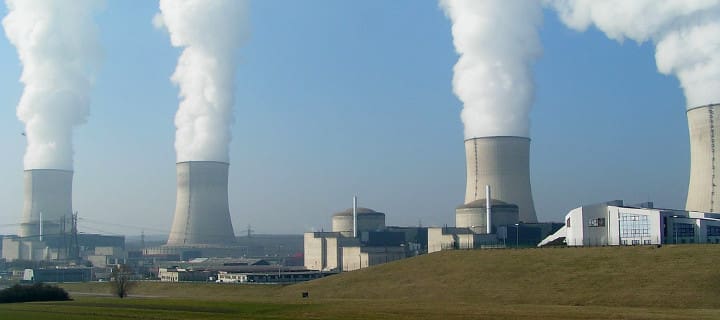CO2e? These days, it seems like there are thousands of easy ways for us to behave in a more sustainable way. We can seamlessly weave things like separating our plastic waste from our organic waste, drinking from a reusable water bottle, not printing our travel documents, or owning a pair of Adidas ocean plastic shoes into our daily lives. Or we can go bigger by driving an electric car, growing our own produce, or powering our home on all renewable energy. The options are endless, and every day, more and more people are making their own commitments to reducing their personal environmental impact.
But when it comes to travel, it often feels like there isn’t a more sustainable option. A surprising 32% of travelers who participated in a survey by Booking.com claimed that they don’t travel more sustainably because of a lack of information and knowledge on what it is or how to do so!
Reducing your carbon footprint when traveling for business or pleasure doesn’t have to be that difficult. We caught up with our Head of ESG at TravelPerk, James Dent, who showed us just how much of an impact a few small changes to our travel habits can have on the environment. Here’s what we learned:
189,120 tonnes of CO2e would be saved if we all took trains instead of planes from London to Paris for one year.
You’d need a forest the size of New York to remove the equivalent amount of CO2e.
Yeah, you read that right. New York. Think about it this way. For every passenger on a flight, 92kg of CO2e is emitted. There’s an average of 2 million passengers between London and Paris per year. That’s about 200,000 tonnes of CO2e per year.
If all these passengers were able to take the Eurostar train instead of the plane, they would save 189,120 tonnes of CO2e. You’d need an 860 km^2 forest to remove that amount of CO2e from the atmosphere. And yes, that is an area the size of The Big Apple. Trains are, without doubt, the more environmentally friendly option.
Here’s a table with a quick breakdown of just how much forest would be needed to remove the amount of carbon emitted if these passengers had not taken the train.
1 day1 month1 year tonnes of CO2e savings518 CO2e 1,689 CO2e 189,120 CO2e km^2 of forest that would be needed to
remove that amount of CO2e from the atmosphere 272860 City size equivalent Monaco Zurich New York
3,069,504 tonnes of CO2e would be saved if all flights from London to New York were run on sustainable air fuels for a year.
That’s equivalent to 7,105,333 barrels of oil.
Do a double-take! If all flights from London to New York were run on sustainable air-fuel for one year, we would save the equivalent of over 7 million barrels of oil.
To put that into perspective, 4 million barrels of oil were spilled during the BP Gulf of Mexico Oil Spill in 2010. When airlines inevitably take the plunge and switch to using sustainable air fuel full-time, they’d be able to save nearly double that in just one year.
If you haven’t brushed up on your green travel lingo just yet, sustainable air fuels show huge promise in making the travel industry more environmentally friendly. They have a smaller carbon footprint than conventional air fuels as they are made of biofuels as opposed to refined oils.
Strides are being made across the air travel sector to make this shift. According to the International Air Transport Association (IATA), SAF can reduce emissions by up to 80% during its full lifecycle. About 14 billion liters of SAF are in forward purchase agreements, indicating that airlines are taking this opportunity seriously.
So, if we could save over 7 million barrels of oil by flying with sustainable air fuels for a year – how many could we save in a day or a month? Check out the table below.
1 day1 month1 year tonnes of CO2e savings8410 CO2e255,792 CO2e3,069,504 CO2e Equivalent # of barrels of oil
that would be saved 19,467592,1117,105,333
1,136,250 tonnes of CO2e would be saved if all hotels in the US used 100% renewable energy for a year.
That would eliminate 504,475 tonnes of coal, or the collective weight of approximately 3000 houses.
There are an estimated 47,000 hotels in the United States today, each one with an average of about 200 rooms. Relying primarily on electricity and natural gas to power things like ventilation, lighting, and water heating; hotels are huge consumers of energy.
If all the hotels across the United States switched to using 100% renewable energy, even for a day, energy savings would be astonishing:
1 day1 month1 year tonnes of CO2e savings 3,113 CO2e 94,688 CO2e 1,136,250 CO2e Equivalent tonnes of coal
that would be eliminated 1,38242,040504,475
The hospitality industry is making strides towards decreasing its carbon footprint, with international chains like the Iberostar Group launching their Wave of Change initiative or the Marriott’s Serve360 commitment. However, there is still quite a long way to go, with the Sustainable Hospitality Alliance claiming that the industry needs to cut carbon emissions by 66% per room by 2030 to counteract emissions.
Switching to renewable energy is one of the best ways for the hotel industry to reach its net-zero targets. More and more utility companies and energy tech startups around the world are making it easier to access clean energy as the deadline to reach the 2030 agenda gets closer.
So, the next time you’re booking a hotel stay, why not look into their sustainability policies and book a more environmentally friendly option?
507,900 tonnes of CO2e would be saved if all car rentals in the EU were electric for a year.

The CO2e savings would be the equivalent of all vehicle emissions in a with a population of 450,000 for one year. That’s the size of Miami (apparently it’s smaller than we thought!).
There’s been a lot of talk in recent years about electric cars, with companies like Tesla at the helm of this conversation. Other large automotive companies like BMW, Audi, Chevrolet, and more are also issuing electric cars to their consumers. With over 280,000 EV charging stations across the European Union, the continent appears to be gearing up for an electric car revolution.
There are about 50 million car rentals in the EU each year, with that number expected to rise to almost 64 million by 2025. So, with that in mind, what effect could there be on the environment if all rented cars in a day, a month, or a year were electric?
1 day1 month1 yearTonnes of CO2e savings 1392 CO2e42,325 CO2e507,900 CO2eBig city traffic equivalent population 122237,000450,000 City vehicle emissions equivalent Vatican City Monaco Bratislava
Electric cars are now a viable, everyday mode of transport that extends huge benefits for our environment. With no tailpipe, electric vehicles (or EVs, as they’re often referred to) don’t emit any exhaust gasses, reducing air pollution in cities. What’s more, many electric charging stations rely on renewable energy to power EVs, making the whole process from charging to driving more sustainable.
How TravelPerk can help you travel more sustainably
At TravelPerk, we’re committed to helping companies learn about sustainable travel and offer the most sustainable travel solutions. From offering the largest train inventory on the market to enabling users to rent electric cars, providing an efficient carbon offsetting solution, and building an open API to help companies understand their carbon footprint and take action – we are constantly developing new ways to make travel more sustainable.
We know that there’s still a long way to go, but hopefully, some of our tools can help you get started. We’re empowering the thousands of companies traveling with us to understand how they can do so more sustainably, and we work tirelessly to provide the most sustainable solution to date.
There’s still a long way to go for the travel industry to become more sustainable, but every step in the right direction counts. We prepared this piece to showcase the fact that every small choice we make in travel can have an impact – and that your decisions count.
The post What if everyone traveled sustainably for one year? appeared first on TravelPerk. For more on travel.

